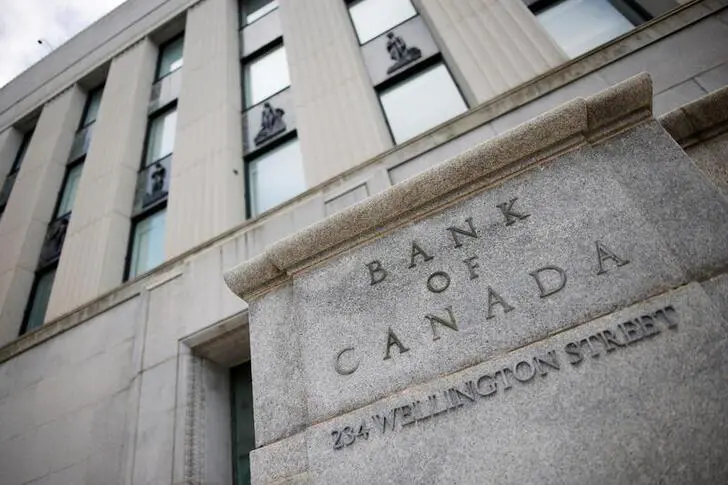PHOTO
TORONTO/OTTAWA - Inflation in Canada is likely to remain a bigger threat than in the United States due to the high growth in Canadian wages and shelter costs, which could see the central bank shifting to interest rate cuts after the Federal Reserve, say analysts.
The Canadian economy is flirting with recession, contrasting with recent strong U.S. growth. That has begun to open up spare capacity in the economy, such as raising unemployment, which is a key part of taming pricing pressures.
But factors peculiar to Canada, such as declining productivity, record levels of immigration and a relatively unionized workforce, could stand in the way of inflation returning to the Bank of Canada's 2% target, analysts say.
A slower move to rate cuts in Canada could help support the Canadian dollar. It could also delay a rebound in the economy and disappoint heavily indebted households, many of which are due to renew their mortgages at higher borrowing costs this year.
"I still think inflation risk is higher in Canada than in the U.S. on a full cycle basis going forward," said Derek Holt, head of capital markets economics at Scotiabank.
"There are stark differences between Canada and the U.S. that I don't find markets appreciate. There should be more differentiation between the Fed and BoC rate paths than is currently priced."
Money markets are betting that the Fed will shift to cutting rates as soon as March, while they are leaning toward April for the first easing from the BoC.
Data on Tuesday showed Canadian inflation accelerating to 3.4% in December. That matches the U.S. rate but wage growth in Canada is much the hotter, at 5.7% last month.
HIGHLY UNIONIZED WORKFORCE
Wage growth could be slow to ease as collective bargaining agreements lock in multi-year wage settlements, Holt said. Canada's workforce is nearly 30% unionized, well above the 10% level in the United States.
Declining productivity tends to add to the inflation pressures coming from higher wages by driving up unit labor costs. Canadian productivity fell in the third quarter for the sixth straight quarter.
At BMO Capital Markets, Doug Porter, chief economist expects inflation to look fairly similar both sides of the border in 2024 but is more cautious about Canada.
"If I had to say which way the risks lie, I might even assert that Canada's inflation problem might be a little bit stickier here this year because of those wage pressures and the housing component," Porter said.
Mortgage interest cost is a big driver of shelter inflation in Canada but another factor is the rapid pace of immigration fueling a housing shortage. Canada's population grew in the third quarter at the fastest rate since 1957, due almost entirely to new residents.
Last month, the BoC called for policy changes to spur more housing construction and reduce pressure on inflation caused by a lack of shelter, especially at a time of record immigration. The central bank is due to make an interest rate decision and update its economic forecasts on Jan. 24.
"We'll get to the same place as the U.S. eventually but we do think that our rate cuts, in Canada, will be a few months after they occur in the U.S.," said Andrew Kelvin, chief Canada strategist at TD Securities.
(Reporting by Fergal Smith in Toronto and Promit Mukherjee in Ottawa; Editing by Denny Thomas and Christopher Cushing)























